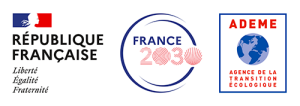Director of the UNESCO International Water Center in Montpellier, research director at IRD, and associate professor at the University of Montpellier, Éric Servat published “Le grand défi de l’eau, Plaidoyer pour la raison, l’espoir et l’action” (The Great Water Challenge: A Plea for Reason, Hope, and Action) with Harper Collins in September 2025. An internationally recognized hydrologist, he calls for an end to anxiety-inducing rhetoric in order to mobilize science, collective intelligence, and innovation around water. This philosophy is shared by Seawards, which is developing innovative cryo-separation technology for desalination, a more economical and less polluting alternative to current processes.
Why write this book now?
Éric Servat: I wanted to write this book to encourage our societies to tackle the issue of water head-on. But also to deliver a reasonable and positive message. We hear a lot of doom-mongering: “everything is screwed,” “life will be nothing but pain and suffering.” But if we keep hammering home that message, how can we get people on board with change? Water is a universal issue; it should bring us together.
You reject catastrophism. Yet the findings are worrying…
Of course, water scarcity and pollution are measurable and growing realities. But we must avoid agitation and take a step back. We sometimes forget to mention that some of the pollution reported is below toxicity thresholds, or that we have
You refuse to be alarmist. Yet the findings are worrying…
Of course, water scarcity and pollution are measurable and growing realities. But we must avoid panic and take a step back. We sometimes forget to mention that some reported pollution levels are below toxicity thresholds, or that we have remarkably high-quality water distribution in Europe. At the same time, 500,000 children die every year in Africa from waterborne diarrhea within a few days because the only water available to them is contaminated. We need to be clear-headed, but also put the issues into context and take action where necessary.
What solutions do you propose?
The first is prevention: the best way to combat pollution is not to generate it in the first place. Next, we need to protect resources, for example by redefining and better protecting catchment areas and involving farmers as stakeholders in water quality. Water is central and essential to all our activities, and it must once again become visible in our public policies.
You place a lot of emphasis on collective intelligence.
That’s what has struck me most in my career. When I was a young hydrologist in Côte d’Ivoire, I took part in the WHO’s major program to combat onchocerciasis, or “river blindness.” Experts with very different skills worked together. As a result, since the early 2000s, some 15 million children in West Africa have been spared blindness in adulthood. This proves that there is no ready-made, universally applicable solution. It is essential to combine expertise that is adapted to local conditions and cultures.
In this context, what roles do technology and innovation play?
I am not a “techno-solutionist.” Technology will not solve everything. But it is part of the solution. Take desalination, for example: it is energy-intensive and polluting, but essential in certain regions such as the Maghreb or, in the long term, the Pyrénées-Orientales, as is the case in neighboring Catalonia. Technologies such as cryo-separation, explored by Seawards, show that it is possible to develop more efficient, non-polluting and more appropriate processes. Innovation, combined with courageous policies and collective intelligence, will help us adapt. As with the climate, we will not save water without science.
In a nutshell, what message do you want to convey?
That nothing is lost. Solutions exist, some already here, others yet to be invented. Provided we never give up, accept to understand, change, and above all, take action.
